Impact Of Muslims On The Development Of Assamese Culture And Society
Introduction
Islam made its way into Assam as early as the 13th century, with some historians suggesting its presence even before the 12th century. The conquest of the Kamrup area by Ikhtiyar al-Din Muhammad bin Bakhtiyar Khilji, the leader of the Khilji dynasty in Bengal, played a significant role in bringing Muslims to Assam. Subsequently, Muslims from various regions migrated to Assam for diverse reasons across different periods.
Exploring the history of Muslims in Assam reveals their substantial contributions and sacrifices to the Assamese society. Figures like Azan Faqir and Muhammad Ali in Medieval Assam, and Sayed Abdul Malik, Mafizuddin Ahmed Hazarika, Moidul Islam Bora, and Hafiz Ahmed in Modern Assam, stand out. Azan Faqir, for instance, propagated the Islamic faith and Sufism in the Brahmaputra Valley through his teachings and practices.
Muhammad Ali made significant contributions to Assamese chronicles, known as Buranjis, while Sayed Abdul Malik left a notable mark on Assamese literature, particularly in novels and poetry, with a repertoire of about 100 literary works.
Muslims arrived in Assam for various purposes such as trade, invasions, visits, propagation of faith, and as Sufi saints. Some settled permanently, while others returned to their places of origin. Those who integrated with the local population contributed extensively to the development of Assamese society and culture. The arrival of Muslims in Assam ushered in a new era, leaving a profound impact on its language, literature, arts, and socio-cultural practices. Their cooperation with Assamese Hindus and other tribal communities fostered a peaceful coexistence within the society.
This article explores the multifaceted contributions and influence of Muslims on the development of Assamese culture, society, language, and literature.
Acculturation and Contribution of Eight Muslim Families
During the Ahom rule, numerous skilled and esteemed Muslims occupied prominent positions in the government and military. Many Muslim soldiers and officers also displayed bravery in Ahom conflicts against the Mughals.
Moreover, eight Muslim families migrated to Assam during the reign of Ahom king Rudra Singha. They seamlessly assimilated into Assamese society and pursued various occupations, including engraving, painting, tailoring, music, and architecture, thereby creating fresh employment avenues in the arts and crafts sector.
These eight families are:
- Parsi Parbiya: Experts in Persian transcription.
- Akbar Kuliya: Royal engravers.
- Khanikar: Masons and artisans.
- Silakutiya: Skilled stone engravers.
- Guna Katiya: Crafters of gold and silver threads.
- Negeriya: Players of the Negera drum.
- Darji: Tailors.
- Jola: Weavers.
These families significantly enriched Assamese culture and society through their diverse occupations and crafts. For example, the Parsi Parbiya family introduced Persian calligraphy to Assam, while Akbar Kuliya and Silakutiya gained renown for their intricate designs and inscriptions on various materials, including metal, stone, wood, and even concrete structures. Their expertise in crafting gravestone designs and inscriptions remains highly regarded among Assam's Muslim populace.
Guna Katiya's specialization in crafting gold and silver threads added opulence to Assamese textiles, while the Negeriya family's adept drumming on the Naqerah drums enlivened ceremonies such as weddings, functions, and sports events.
The Darjis played a pivotal role in introducing new clothing styles and Islamic attire to the region, including garments like the Hijab, Burqa, and Kurta Pajama, which became integral to Assamese fashion.
Lastly, the Jola weavers upheld Assam's rich tradition and culture by crafting a wide array of garments and textiles, contributing significantly to the state's textile heritage.
In essence, these eight Muslim families left an indelible mark on Assam's cultural and societal fabric. Each excelled in their respective crafts and occupations, and their enduring influence continues to shape and enrich the region's diverse cultural tapestry.
Muslims' Impact on Art, Architecture, and Culture of Assam
Assamese Muslims have left an indelible mark on the advancement of society and culture in Assam, particularly in the realms of architecture and art. Their influence is evident in various constructions, including palaces, Satras (Vaishnavite monasteries), Namghars (prayer halls), Masjids (mosques), and temples.
In the 18th century, the renowned Muslim architect Ghanashyam undertook the construction of Talatal Ghar, the largest palace built during the Ahom period, under the patronage of Ahom ruler Swargadeo Rajeshwar Singha (Surempha).
In the domain of Assamese art, the contributions of two Muslim painters, Dilbar and Doshai, stand out prominently. They made significant contributions to the field, particularly through their work on the paintings of the Assamese manuscript book, Hastividyanarva.
Hastividyanarva, authored by Sukumar Barkaith, provides insights into the culture and society during the reign of the Ahom dynasty, focusing notably on the maintenance of elephants, which held significant symbolic importance in affirming the Ahom monarchy. The manuscript also depicts various aspects of the Ahom court, including meetings, the monarch's ceremonial rides, and the decoration of royal assets.
Dilbar and Doshai's paintings on this manuscript vividly capture these cultural nuances, leaving a lasting impact on Assamese culture. Their artistic renderings not only preserve historical narratives but also contribute to the rich cultural heritage of Assam, showcasing the interplay between Muslim influences and Assamese traditions.
Impact of Muslims on Assamese Language and Literature: Azan Faqir
Shah Miran, a revered Sufi saint from Baghdad in the 17th century, journeyed to Assam to spread the teachings of Islam, where he became known as Azan Faqir.
Azan Faqir is celebrated for his extensive propagation of Islam and Sufism across the Brahmaputra Valley of Assam. His notable contribution to the Assamese language and literature lies in his creation of Islamic devotional songs, Zikir and Zaris. These compositions, infused with Arabic and Persian elements, marked a significant milestone in Assamese literary history, serving as a means to disseminate Islamic faith and beliefs among the people of Assam.
Azan Faqir's compositions found widespread acceptance among the Assamese populace, fostering harmony, peace, and fraternity between Hindus and Muslims in the region. His followers played a crucial role in spreading his teachings far and wide, ensuring that his Zikirs resonated in every corner of Assam, perpetuating his thoughts and ideas for generations to come.
Muhammad Ali: A Scholar and Chronicler
Hailing from Secunderabad, Muhammad Ali was a distinguished scholar proficient in Arabic and Persian languages. His journey to Assam commenced alongside Nawab Mansur Khan during the 1682 AD expedition.
Despite Nawab Mansur Khan's defeat by the Ahoms, Muhammad Ali chose to remain in Assam. With the authorization of Gorgoiyan Sandhikoi, an administrator of the Ahom kingdom, Muhammad Ali undertook the remarkable task of composing the Padshah Buranji. This chronicle, written in the Assamese language, chronicled significant events in medieval Assam, offering invaluable insights into its historical tapestry.
In addition to the Padshah Buranji, Muhammad Ali penned a chronicle detailing the history of the Delhi Sultans in Assamese. Both works represented profound contributions to the Assamese language, enriching its literary landscape with historical narratives of great significance.
The Padshah Buranji, in particular, garnered widespread acclaim and was later translated into English by S.K. Bhuyan under the title "Annals of the Delhi Badhshahate," ensuring its accessibility to a broader audience. Muhammad Ali's scholarly endeavours and literary contributions continue to illuminate Assam's historical heritage.
Moidul Islam Bora: Champion of Assamese Literature and Persian Studies
Moidul Islam Bora stands as a prominent figure in Assamese literature, renowned for his profound research and exploration of Persian literature and culture, juxtaposing it with Assamese literary traditions. He delved into the historical trajectory of Persian influence on Assamese literature, tracing its roots back to the early Muslims who migrated to Assam from the Mughal Sultanate and beyond.
Serving as the President of the Assam Sahitya Sabha (Assam Literature Assembly) from 1940 to 1941, Moidul Islam Bora emerged as a stalwart advocate for promoting and preserving the Assamese language and literature. His numerous books and articles, written in Assamese, shed light on various facets of Persian literature and culture, enriching the literary landscape of Assam.
Among his notable works are:
- "A History of Persian Literature in Assam": Offering a comprehensive exploration of the evolution and impact of Persian literary traditions within the Assamese context.
- "The Influence of Persian Literature on Assamese Literature": Examining the interplay between Persian and Assamese literary expressions, highlighting their mutual influences and exchanges.
- "A Comparative Study of Persian and Assamese Poetry": Providing a nuanced analysis of the similarities and differences between Persian and Assamese poetic forms, themes, and techniques.
- "A Critical Edition of the Divan of Amir Khusrau": Offering scholarly insights into the works of the renowned Persian poet Amir Khusrau, enhancing understanding and appreciation of his contributions to Persian literature.
Additionally, Moidul Islam Bora contributed to educational literature with works like "My First Reader" and "My Second Reader," aimed at nurturing reading skills and fostering a love for literature among young learners
Mafijuddin Hazarika: Poetic Luminary of Assamese Literature
Mafijuddin Hazarika emerges as a celebrated figure in Assamese literature, revered for his profound impact on the language and literary landscape. His poetic oeuvre, including works such as "Jnan Malini" and "Tottyo Parijat," remains emblematic of his mastery and creative prowess. Notably, his contributions were recognised on a broader platform when he assumed the esteemed role of the 12th President of the Assam Sahitya Sabha, an honour reflecting his esteemed status within the literary community.
Sayed Abdul Malik: Scholar, Novelist, Literary Icon
Sayed Abdul Malik occupies a distinguished position in Assamese literature as a prolific scholar and novelist, garnering acclaim and recognition for his exceptional contributions. Serving as the President of the Assam Sahitya Sabha in 1977, he demonstrated his leadership and commitment to advancing literary endeavours.
His illustrious career was adorned with numerous awards, including the prestigious Padma Shri in 1984, Padma Bhushan in 1992, and the Srimanta Sankaradeva Award in 1999. Notably, he was honoured with the Sahitya Akademi Award for his groundbreaking novel, "Aghori Atmar Kahini" (Tale of a Nomadic Soul), a testament to his literary genius and narrative skills.
Some of his notable works in Assamese literature include:
- "Sobighar" (1959)
- "Jia Jurir Ghat" (1960)
- "Trishul" (1964)
- "Hipare Pran Samudra" (1972)
- "Rupaborir Polokh" (1980)
- "Morom Morom Lage"
- "Shakhhar"
Sayed Abdul Malik's literary legacy continues to resonate, inspiring generations of readers and writers with his profound insights, captivating storytelling, and enduring contributions to Assamese literature.
Conclusion:
The contributions of Muslims to Assamese culture and society have left an enduring imprint on the development of Assam, spanning cultural, social, and economic spheres. The examples highlighted are just a glimpse of their multifaceted impact.
Muslims have enriched the Assamese language, literature, art, and architecture. Under the patronage of Ahom kings, Muslim artists and architects played pivotal roles in constructing temples and palaces, with Ghanashyam's masterpiece, the Talatal Ghar, standing as a testament to their craftsmanship.
Dilbar and Dosai's artistic endeavours, exemplified in their illustrations of historical manuscripts like "Hastividyanarva," have profoundly influenced Assamese arts and culture, particularly in portraying aspects of elephantology.
The contributions of eight Muslim families across various occupational fields have furthered the development of Assam's culture, society, and economy.
In the realm of language and literature, Muslims have made significant strides. Azan Faqir's introduction of Zikir and Zairis revolutionised Assamese devotional music and introduced Islamic beliefs to the Assamese populace. Muhammad Ali's "Padshah Buranji" remains a cornerstone of Assam's historical chronicles, while Moidul Islam Bora and Mafijuddin Hazarika emerged as towering figures in Assamese literature, enriching it with their poetic and scholarly works. Sayed Abdul Malik's literary prowess crowned him as a prince of Assamese literature in the modern era, leaving an indelible legacy in poetry, novels, essays, and beyond.
In essence, Muslims' contributions and impacts on Assamese culture and society are manifold, shaping the vibrant tapestry of Assam's heritage and identity for generations to come.
About the author: Ashraful Faruki, from Assam, is a PG research scholar at the Department of Civilizational Studies at Darul Huda Islamic University, Malappuram, Kerala.
Disclaimer
The views expressed in this article are the author’s own and do not necessarily mirror Islamonweb’s editorial stance.

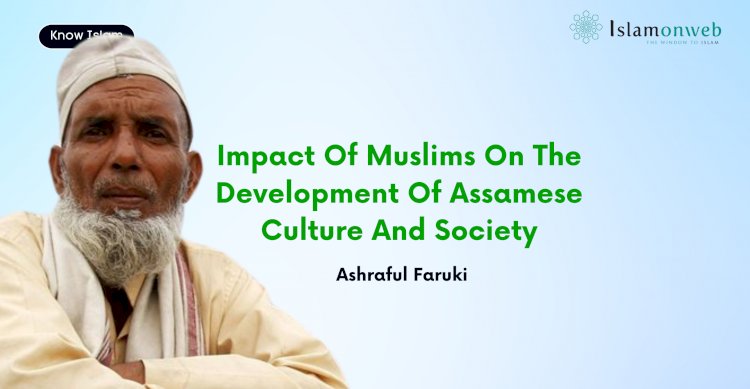


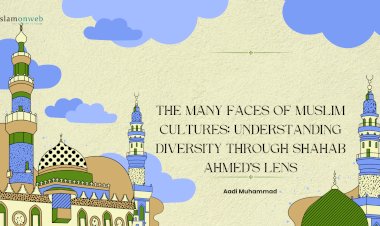
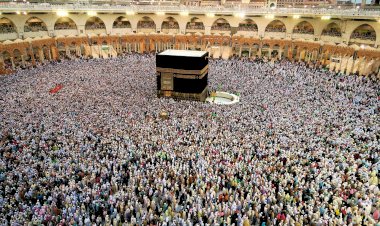


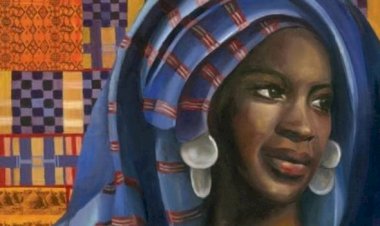
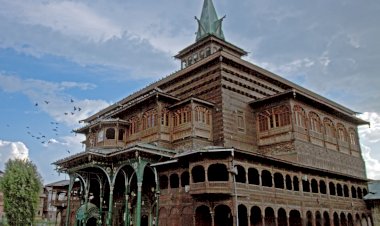














Leave A Comment